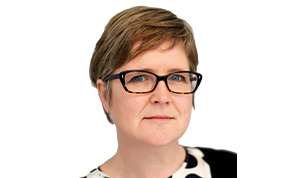Covid-19 update: 28 August
Prime minister Boris Johnson is often reminded that he told MPs in May that the tracing system for Covid infections would be in place by 1 June and would be ‘world-beating’. At the time, the feeling within Test and Trace was that it would take until at least September to be at that level. It could take a little longer, with the latest statistics showing a mixed picture for a service that is in the process of merging with parts of Public Health England (creating the National Institute for Health Protection, NIHP).
Between 13 and 19 August, 6,115 people tested positive, a drop of 8% on the previous week, and the first decrease since the beginning of July. Over the same period, the number of people tested increased by 2%. However, on 27 August, the UK recorded more than 1,500 new cases – the highest number since the middle of June. The Department’s dashboard indicates cases are once again rising throughout the UK – though greater testing could be one of the reasons for the increase.
Overall turnaround times continued to increase for all routes into pillar 2 testing – the swab testing for the wider population that includes home testing kits, regional testing centres, mobile testing units and satellite testing (used by care homes, for example). This will be a disappointment to the Department as turnaround time – the time from test to result – is crucial in limiting the spread of the virus.
One of Test and Trace’s main objectives is to reach 80% of people testing positive, and 80% of their contacts. In the week to 19 August, 7,941 people who had positive tests were transferred to the tracing system. Just over 72% were reached, a decrease on the previous week, when 79% were contacted. The overall figures since Track and Trace was launched look better, with almost 78% of people who tested positive reached, though this is still short of the 80% target.
Almost a quarter of close contacts were not reached between 13 and 19 August, though Test and Trace hit its target overall by reaching 80.6% of contacts in the last three months. The picture looks less favourable when dividing contacts into complex and non-complex referrals. Complex referrals can include tracking down the contacts of someone who has recently visited a hospital or care home; non-complex cases can include the contacts they have made in their household.
Despite appearing more straightforward, only 57.5% of non-complex contacts have been reached over the three months since the launch of Test and Trace. The remaining 42.5% is roughly equalled divided between close contacts not reached and contact details not provided. Complex cases, which are referred to local Public Health England teams, showed a 97.6% success rate.
Saffron Cordery (pictured) NHS Providers deputy chief executive, said the picture was mixed. ’At face value it’s encouraging to see a significant fall in the numbers of people testing positive, despite an increase in tests carried out. But it’s worrying to see that too many people are still not being reached by the system.
‘It’s also a real concern that overall turnaround times for swabs taken in the community are taking longer. This is a key component of an effective test and trace system, which we’ll need for the months ahead. Clearly, we’re not there yet.’
Authorities will be hoping the reopening of schools to all pupils will have minimal impact on the number of positive coronavirus cases. With schools already open, Scotland’s figures will be looked at especially closely. First minister Nicola Sturgeon said the number of cases since local schools opened on 12 August was ‘encouraging’. Of the 17,500 children aged between 2 and 17 tested last week, 49 had the virus. However, an outbreak linked to the Kingspark School in Dundee continued to cause concern. Cases identified there included 22 staff members, 11 community contacts and three pupils. Other schools in the city had registered positive cases, but remained open.
Pupils and staff in secondary schools in Scotland and Northern Ireland will wear face coverings in corridors and communal areas from 31 August. In Wales, the decision will be taken by headteachers and councils. In England, the government initially dismissed the idea, before partially changing its mind hours later. From 1 September, face coverings will only be compulsory in secondary school corridors and other communal areas in districts where there is a local lockdown. However, headteachers can introduce masks should they decide it is the best course of action. The government said its advice had changed following new guidance from the World Health Organization.
All four UK chief medical officers (CMOs) issued a joint statement urging parents to send their children to school. They said that on current evidence there is ‘an exceptionally small risk’ of children dying from Covid-19, while those who do catch the virus are more likely to get mild symptoms or no symptoms at all. On the other hand, lack of schooling increases inequalities, reduces life chances and can exacerbate physical and mental health issues.
Teachers are at no greater risk of dying compared with the general working age population and, while transmission in school does happen, it is largely staff member to staff member, the CMOs said. This reinforced the need for social distancing. Transmission from children to adult relatives seemed relatively rare, though the CMOs conceded the evidence for this was weak. Young people should ensure they abide by Covid secure measures to protect school staff and their wider families, they said.
The CMOs’ statement was supported by a study in the British Medical Journal. This looked at two-thirds of children’s hospital admissions due to Covid in the UK between January and July. Of the 651 children studied, 1% had died in hospital with Covid-19, compared with 27% across other age groups. The six children who had died had ‘profound’ underlying conditions.
Worldwide, countries including France, Spain and South Korea are seeing a rise in cases. The UK government announced that people who enter the country from Jamaica, Switzerland and the Czech Republic after 4am on 29 August will have to self-isolate for 14 days.
The Department announced a payment for people on low income who are self-isolating and living in the highest risk areas of England. The payment will be available to people claiming Universal Credit or Working Tax Credit who cannot work from home. They must be isolating after testing positive or after NHS Test and Trace identifies them as someone who lives in the same household as, or comes into contact with, a Covid-positive person.
The scheme will be trialled in parts of the North West, with those testing positive to receive £130 for their 10-day isolation and other household members receiving £182 for their 14-day self-isolation. Those outside the household advised to self-isolate will receive up to £182, depending on the length of their period of isolation. Critics pointed out that the payment amounted to £13 a day and urged the government to encourage people to self-isolate by ensuring they received full pay.
Related content
We are excited to bring you a fun packed Eastern Branch Conference in 2025 over three days.
This event is for those that will benefit from an overview of costing in the NHS or those new to costing and will cover why we cost and the processes.